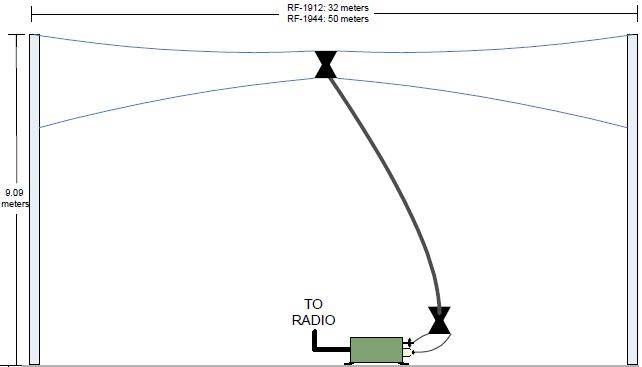This summarizes a selection from 215 applications for the Experimental Radio Service received by the FCC during October, November, and December 2011. These are related to AM broadcasting, FM broadcasting, spread spectrum on HF and VHF, unmanned aerial vehicle control, electronic warfare support, small satellites, white space technology, video production, managed access, TV interference, RFID, and radar. The descriptions are listed in order of the lowest frequency found in the application.
Archive for the ‘Modulation/Demodulation’ Category
Experimental Radio Applications at the FCC
Sunday, February 5th, 2012Reports from NAB and CTIA Address Efficient Use of Spectrum
Saturday, May 14th, 2011Experimental Radio Applications at the FCC
Tuesday, March 15th, 2011This summarizes a selection of applications for the Experimental Radio Service received by the FCC during February 2011. These are related to cognitive radio, land mobile, TV white space, unmanned aircraft systems, satellite terminals, ultra-wideband, wildlife tracking, interference detection, and radar. The descriptions are sorted by frequency.
Stanford-developed Transceiver Operates Full Duplex on a Single Channel
Wednesday, March 2nd, 2011To avoid interference, wireless transceivers can switch between transmit and receive on one frequency (Time Division Duplex (TDD)). Or, they can transmit and receive at the same time on different frequencies (Frequency Division Duplex (FDD)). There’s been a flurry of press reports about a new radio system, developed by Stanford researchers, that can operate full duplex on a single channel; that is, transmitting and receiving at the same time on the same frequency, something not done before.
Experimental Radio Applications at the FCC
Saturday, August 14th, 2010This summarizes a selection of applications for the Experimental Radio Service received by the FCC during July 2010. These are related to high-frequency data, military communications, environmental data collection, synthetic aperture radar, WiMAX, sensor networks, interference-resistant communications, LTE, rail transportation, air traffic control, white space networks, and RFID.
- Harris filed an application (with supporting exhibits) for experimental license to operate on various frequencies between 3 and 15 MHz to test an experimental high-frequency wideband waveform that is intended to operate at either 12 kHz bandwidth or 24 kHz bandwidth to allow faster data transfer via high-frequency communications.
- Harris also filed an application (with supporting exhibit) for experimental license to operate on 4.94-4.99 GHz in support of development of US Army’s Warfighter Information Network: Tactical (WIN-T) and Future Combat Systems (FCS) programs. Equipment is to consist of the HNRe2 Highband Network Radio, manufactured by Harris. Harris says the HNRe2 is comprised of four elements: 1) the Baseband Processing Unit, 2) the Highband RF Unit (HRFU), 3) an Inertial Navigation Unit (INU), and a GPS device. The HRFU further consists of an upconverter, a High-Powered Amplifier (HPA), a Switched Beam Antenna (SBA), a Low-Noise Amplifier (LNA), and a downconverter). The test network will consist of five fixed nodes and one mobile node. The FCC has asked Harris to justify extended testing in a band that is primarily allocated for non-government public safety use.
- Canon U.S.A. filed an application (with supporting exhibits) for special temporary authority to operate wireless devices in support of a private technology and product exhibition from September 1, 2010 through September 3, 2010 at the Jacob K. Javits Convention Center in New York, NY. Canon is planning to import many wireless devices from Japan to be used with displays during the exhibition. These devices are not FCC compliant and not expected to be FCC compliant until after the exhibition. Frequencies requested include 315.0-315.7 MHz, 2.40-2.50 GHz, 5.18-5.67 GHz, and 61.6-62.5 GHz. This application was granted on August 11.
Experimental Radio Applications at the FCC
Tuesday, January 26th, 2010This summarizes a selection of applications for Experimental Radio license, and for Special Temporary Authority, received by the FCC during January 21-25: radar, spacecraft telemetry, cognitive radio, modulation/demodulation techniques.
Raytheon Missile Systems files an application and supporting exhibit requesting Special Temporary Authority to use Freewave radios on an aircraft in support of a test to verify the accuracy and effectiveness of aircraft radar. The plan is to transmit the position information from the tracked aircraft to the tracking aircraft, and verify that the position information determined by the radar is in sync with the actual position of the tracked aircraft. (1.35-1.39 GHz)
(more…)
